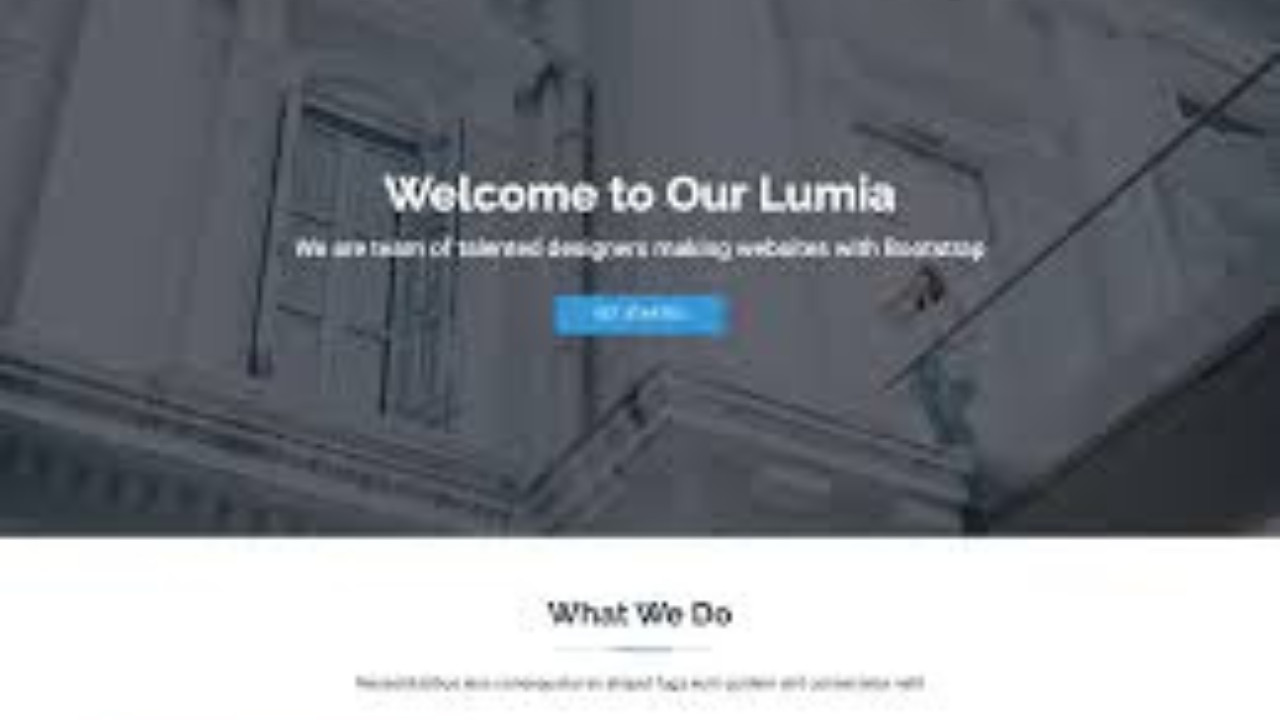Free Download Lumia Bootstrap Template

The Lumia Bootstrap Template is a modern, elegant, and fully responsive website template designed to cater to businesses, startups, agencies, and portfolios. Built on the powerful Bootstrap framework, Lumia ensures seamless user experience and adaptability across all devices.
Introduction to Lumia Bootstrap Template
The Lumia Bootstrap Template is a modern, elegant, and fully responsive website template designed to cater to businesses, startups, agencies, and portfolios. Built on the powerful Bootstrap framework, Lumia ensures seamless user experience and adaptability across all devices. Whether you're building a personal blog or a corporate site, this template offers a clean and visually appealing design that is easy to customize to fit your needs.
Step-by-Step Guide to Customizing the Lumia Bootstrap Template
The Lumia Bootstrap Template comes with a variety of pre-designed sections that you can tweak and personalize to create a polished and professional website. Below is a step-by-step guide to help you customize and set up the Lumia Bootstrap template.
Step 1: Download and Extract the Template
1. Download the Template
You can download the Lumia Bootstrap Template from various template websites like BootstrapMade, Start Bootstrap, or other sources. The template will usually be available as a .zip file containing all the necessary files.
2. Extract the Files
After downloading, extract the .zip file into a folder on your computer. Inside the folder, you will find HTML files, CSS stylesheets, JavaScript files, and images.
3. Open the Template in a Browser
To see the template in action, open the index.html file in your web browser. This will load the default design of the template and give you a preview of how it looks.
Step 2: Customizing the Navigation Bar
The Lumia Bootstrap Template includes a stylish and responsive navigation bar that collapses on smaller screens. Here’s an example of how to customize the navigation bar:
In this example, the navigation bar contains links to different sections of your website, such as Home, About, Services, Portfolio, and Contact. You can easily customize these links and adjust the layout as needed.
Step 3: Hero Section Customization
The Hero Section is an essential part of any modern website. It provides a large, attractive introduction to your website, usually with a background image or video and a clear call-to-action. Below is an example of a Hero Section:
This Hero Section contains a large headline, a brief description, and a CTA button that leads to the Services section. You can customize the background image, text, and button to match your branding.
Step 4: About Section
The About Section provides an opportunity to introduce your company or brand and explain your values and mission. It helps establish trust with visitors. Here’s an example of how to set up your About Section:
This About Section provides a concise description of your company, its values, and its mission. You can easily edit this to add more information, such as your history, team members, and milestones.
Step 5: Services Section
The Services Section is essential for highlighting the services you provide. It’s important to present your offerings in a visually appealing and easy-to-understand way. Below is an example:
This Services Section uses a three-column layout to showcase different services you offer. You can add more services or adjust the layout according to your business.
Step 6: Portfolio Section
A Portfolio Section is a great way to showcase your work and past projects. It helps build credibility and show potential clients the quality of your work. Here’s an example of a Portfolio Section:
This Portfolio Section uses a three-column grid layout to display images of your past projects, each with a title below. Replace the images with your own work and adjust the titles as necessary.
Step 7: Contact Section
The Contact Section allows visitors to get in touch with you. You can include a contact form or provide your contact details like email, phone number, and address. Below is an example:
This Contact Form collects the visitor's name, email, and message. You can customize this to add fields like phone number or address if needed.
Step 8: Footer Section
The Footer Section typically contains copyright information, social media links, and legal links. Below is an example:
This Footer Section contains basic copyright text and links to your Privacy Policy and Terms of Service pages.
Conclusion
The Lumia Bootstrap Template is an excellent choice for businesses, startups, and portfolio websites. Its modern design, responsive layout, and customizable features allow you to create a professional online presence. By following this step-by-step guide, you can easily personalize each section